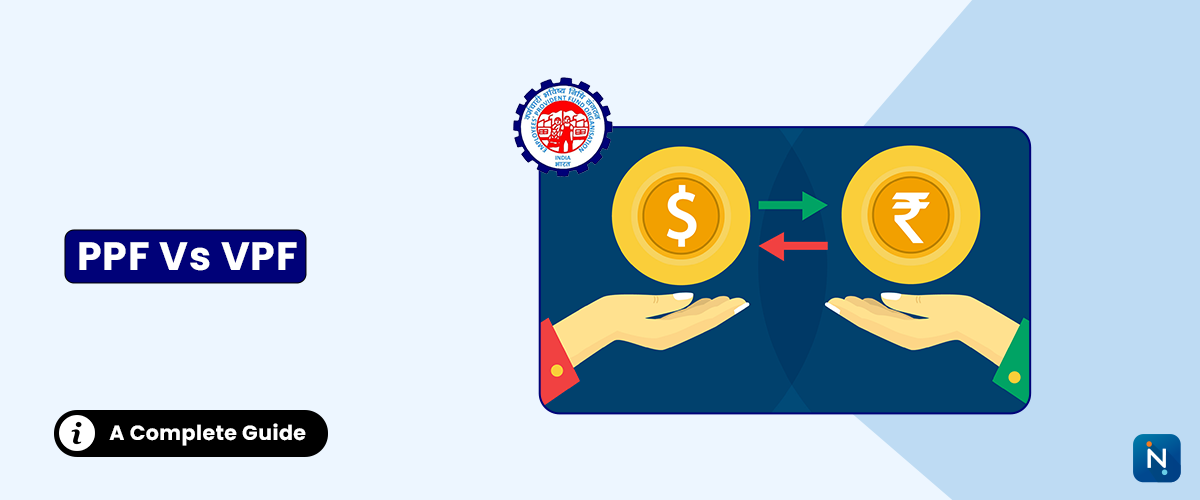Blogs > PPF vs VPF: Which is Better for Your Long-Term Savings?
 PPF vs
VPF: Which is Better for Your Long-Term Savings?
PPF vs
VPF: Which is Better for Your Long-Term Savings?
When it
comes to safe, government-backed investments in India, Public Provident Fund
(PPF) and Voluntary Provident Fund (VPF) are two of the most popular
options. Both offer attractive interest rates, tax benefits, and long-term
wealth-building potential. However, they differ in terms of contribution
flexibility, lock-in period, and returns.
In this
blog, we will compare PPF vs VPF so you can decide which one suits your
financial goals.
What is
PPF (Public Provident Fund)?
The Public
Provident Fund is a long-term savings scheme backed by the Government of
India, available to any Indian citizen.
What is
VPF (Voluntary Provident Fund)?
The Voluntary
Provident Fund is an extension of the Employee Provident Fund (EPF) that
allows salaried employees to contribute beyond the mandatory 12% of their basic
salary.
PPF vs
VPF: Detailed Comparison Table
|
Feature |
PPF |
VPF |
|
Eligibility |
Any Indian
citizen |
Only
salaried employees with EPF account |
|
Interest
Rate (FY 2024–25) |
7.1% p.a. |
8.25% p.a. |
|
Lock-in
Period |
15 years |
Till
retirement/job change |
|
Contribution
Limit |
₹500 –
₹1.5 lakh/year |
Up to 100%
of basic + DA |
|
Tax
Benefit |
Section
80C deduction up to ₹1.5 lakh |
Section
80C deduction up to ₹1.5 lakh |
|
Interest
Taxability |
Tax-free |
Tax-free
(up to ₹2.5 lakh/year contribution) |
|
Withdrawal
Rules |
Partial
withdrawal after 5 years |
Partial
withdrawal allowed for specific purposes |
|
Risk
Level |
Very low |
Very low |
Which One
Should You Choose?
💡 Smart Tip: If eligible, you
can invest in both to diversify your tax-saving portfolio and maximize
your guaranteed returns.
Example
Scenario
If you
invest ₹10,000/month:
That’s a
difference of ₹3 lakh—just from choosing the higher interest option.
Internal
& External Links
FAQs on
PPF vs VPF
Q1. Can I
invest in both PPF and VPF?
Yes, you can invest in both to maximize your savings and tax benefits.
Q2. Which
gives higher returns—PPF or VPF?
VPF usually offers higher interest rates compared to PPF.
Q3. Is
VPF safer than PPF?
Both are government-backed and very safe; however, VPF is linked to your
employment.
Q4. Can I
withdraw from PPF before maturity?
Partial withdrawals are allowed after 5 years under certain conditions.
Q5. Is
the interest earned on VPF taxable?
Interest is tax-free if your annual PF contribution is within ₹2.5 lakh.
Apply Now with IndiaLends
to explore personal loan options while keeping your PPF and VPF investments
intact.